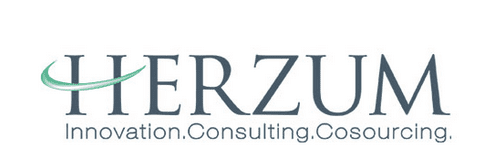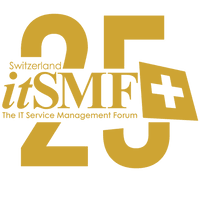Reading time: ~ 7 min.

How ITSM-driven DEX elevates employee experience
In the highly digital-first world, employee productivity mounts on a seamless and efficient technology experience. A frustrated employee grappling with slow applications, unreliable connectivity, or cumbersome processes is a disengaged and unproductive employee.
That's where the convergence of IT Service Management (ITSM) and Digital Employee Experience (DEX) comes into play, creating a powerful synergy that unlocks unprecedented levels of productivity.
What is DEX and why does it matter?
Digital Employee Experience (DEX) encompasses all the interactions an employee has with technology throughout their workday. This includes everything from the devices they use, the applications they access, the network connectivity they rely on, and the support they receive when things go wrong. Work has transformed significantly. With a sudden move to remote operations and a continuing shift towards hybrid work environments, IT organizations need to adjust swiftly.
In this evolving landscape, ensuring a good DEX is vital for organizations to attract and retain top talent. A high DEX is linked to high employee engagement and retention rates—93% of employees with a high EX index score plan to stay with their organization for the next year, compared with only 49% of employees with a low EX index score.
By 2025, over 50% of IT organizations will prioritize and measure digital initiatives based on DEX, a significant increase from less than 5% in 2021.
Benefits of improving DEX

- Boosts Productivity: employees spend less time troubleshooting and more time focusing on their core tasks.
- Supports hybrid workforces: as remote work becomes prevalent, DEX ensures consistent IT experience for hybrid teams, maintaining performance and connectivity over diverse networks.
- Improved Employee Satisfaction: a smooth and efficient technology experience fosters a sense of empowerment and reduces frustration.
- Enhanced Engagement: engaged employees are more likely to be productive, innovative, and committed to the organization.
- Attracts and retains talent: offering superior IT services and implementations appeals to tech-savvy professionals, reducing turnover and attracting new talent.
- Minimizes IT burdens: DEX platforms can automate certain tasks, including resolution of common IT issues, freeing up IT administrators from mundane duties. This allows administrators to focus on strategic IT improvements and enhances job satisfaction.
ITSM: the foundation for DEX
- Proactively identify and resolve issues: ITSM's focus on monitoring, incident management, and problem management helps identify and address potential issues before they impact employees.
- Streamline service delivery: ITSM's service catalog and self-service portal provide employees with easy access to the resources and support they need.
- Improve communication and collaboration: ITSM's communication channels and knowledge base facilitate seamless communication and collaboration between IT and employees.
- Continuously improve Employee Experience: ITSM's focus on continuous service improvement (CSI) ensures that the DEX is constantly evolving to meet the changing needs of employees.
- Prioritize XLA over SLA: an XLA is an approach focusing on the quality of the user experience in IT services, rather than just technical metrics. Unlike traditional SLAs that measure performance based on uptime and response times, XLAs consider user satisfaction, ease of use, and overall perceived value, aiming to ensure services meet user expectations and enhance end-user productivity and engagement.
ITSM-driven DEX: key strategies for boosting productivity
1. Proactive Monitoring and Issue Resolution
- Leverage endpoint management tools: implement endpoint management tools that provide real-time visibility into device performance, application usage, and network connectivity.
- Implement automated remediation: configure automated remediation workflows to automatically resolve common issues, such as application crashes or network connectivity problems.
- Utilize AI-powered analytics: employ AI-powered analytics to identify patterns and predict potential issues before they impact employees.
Example: imagine an employee experiencing slow application performance. With proactive monitoring, IT can identify the issue, diagnose the root cause (e.g., high CPU utilization on the server), and automatically restart the server before the employee even reports the problem.
2. Streamlined self-service and support:
- Create a comprehensive service catalog: develop a service catalog that provides employees with easy access to all the IT services and resources they need, such as software requests, hardware upgrades, and training materials.
- Implement a user-friendly self-service portal: design a self-service portal that is intuitive and easy to navigate, allowing employees to resolve common issues on their own.
- Offer multiple support channels: provide employees with multiple support channels, such as phone, email, chat, and self-service portal, to cater to their individual preferences.
3: Personalized and contextualized support:
- Utilize user segmentation: segment users based on their roles, departments, and technology usage patterns to provide personalized support.
- Provide contextual help: offer contextual help and guidance based on the employee's current activity and location.
- Leverage AI-Powered chatbots: implement AI-powered chatbots to provide instant answers to common questions and guide employees through troubleshooting steps.
4. Continuous improvement and feedback:
- Collect employee feedback: regularly solicit feedback from employees on their technology experience through surveys, focus groups, and feedback forms.
- Analyze feedback and identify areas for improvement: analyze employee feedback to identify areas where the DEX can be improved.
- Implement continuous service improvement (CSI): use ITSM's CSI framework to continuously improve the DEX based on employee feedback and data analysis.
KIDAN and ManageEngine: a powerful partnership for DEX excellence
Metrics for measuring DEX success:
- Employee Satisfaction (ESAT): measure employee satisfaction with the technology experience through surveys and feedback forms.
- Net Promoter Score (NPS): measure employee loyalty and advocacy for the IT department.
- Time to Resolution (TTR): measure the time it takes to resolve IT issues.
- First Call Resolution (FCR): measure the percentage of IT issues resolved on the first contact.
- Employee Productivity: measure employee productivity through metrics such as output, efficiency, and error rates.
Conclusion: a productive workforce starts with a great DEX
Amidst remote work and digital transformation, the importance of DEX is rising. To ensure productivity and engagement, organizations must provide essential tools and systems for their digital and mobile workforce. However, managing distributed networks and dynamic infrastructure for remote employees can be challenging for modern enterprises. Slow or faulty applications can impede productivity, and a lack of visibility can lead to delays in issue resolution.
In order to truly utilize the potential of ITSM-driven DEX, consider leveraging robust solutions designed to streamline processes and provide valuable insights. ManageEngine offers ServiceDesk Plus, a comprehensive ITSM solution, a tool necessary to proactively manage and optimize the digital employee experience.
DEX management with ManageEngine
Ultimately, creating a stellar Digital Employee Experience requires a holistic approach, bridging the gap between IT service delivery and proactive technology management. While an ITSM foundation, particularly solutions like ManageEngine ServiceDesk Plus, provides a robust framework for incident resolution, self-service, and knowledge management, true DEX optimization demands deeper visibility and proactive intervention.
That's where ManageEngine's broader ITOM suite shines, offering robust application performance monitoring through Applications Manager for deep insights into critical applications. This simplifies the complexities of the modern application stack and ensures proactive resolution of performance bottlenecks.
Furthermore, ManageEngine's UEM suite, anchored by Endpoint Central, streamlines endpoint management with asset tracking, automated patching, and centralized software deployment. This not only enhances security and controls app usage but also optimizes spending and enables the deployment of self-healing automations to fix common endpoint issues automatically.
Finally, Analytics Plus can visualize and track key DEX metrics and insights through customizable dashboards, further streamlining your ITSM efforts. By strategically integrating these solutions, organizations can enhance monitoring, automate resolutions, personalize support, and continuously improve the DEX, ultimately leading to a more engaged, productive, and satisfied workforce. Empower your employees with the right tools, and watch productivity soar.
By strategically leveraging tools like ManageEngine ServiceDesk Plus, Applications Manager, Endpoint Central, and Analytics Plus, KIDAN can help your organization streamline monitoring, automate issue resolution, and provide personalized, proactive support—ultimately leading to a more engaged, productive, and satisfied workforce.
Author: Dani SYED is the CEO of KIDAN, a leading Swiss IT consulting company and exclusive ManageEngine distributor. A board member of itSMF Switzerland, he is passionate about redefining the boundaries of service management and building purposeful, experience-driven IT organizations.
Our sponsors
A special thanks to our Advanced Sponsors:





